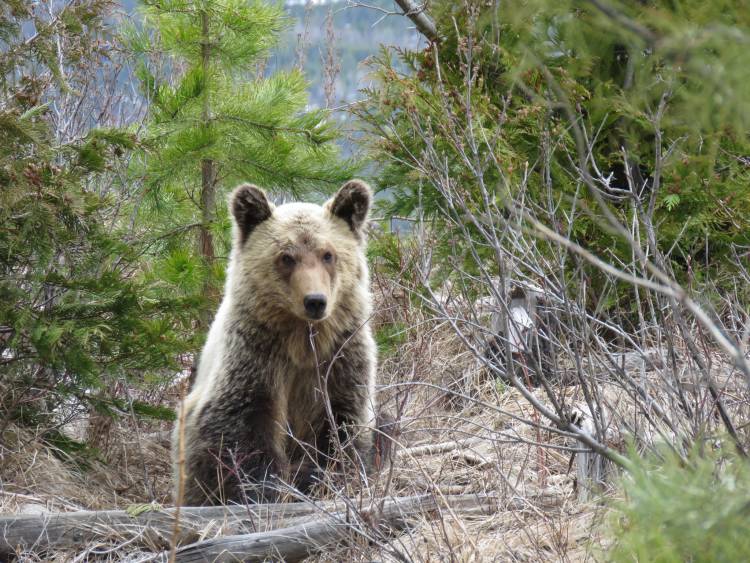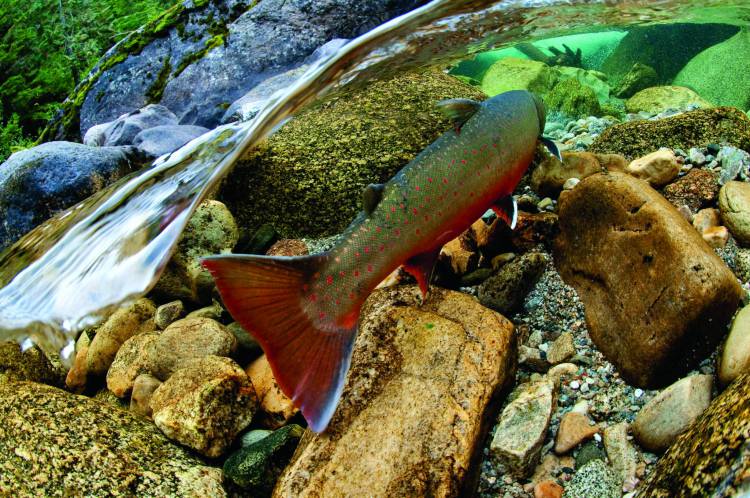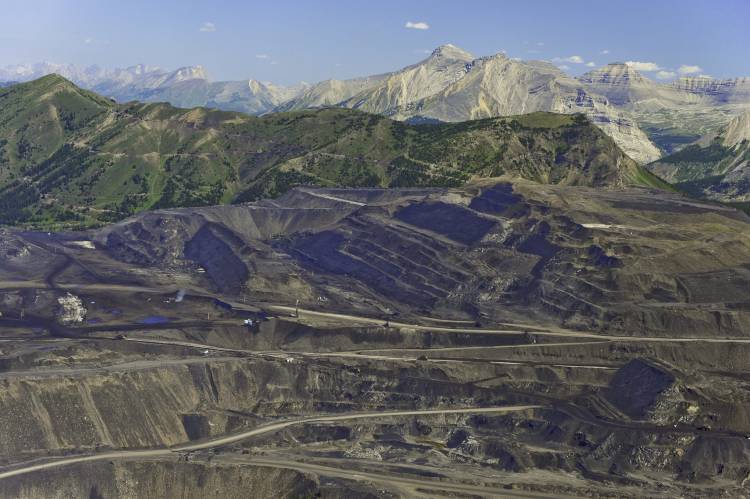It’s tough to wrap your head around: in BC, there are enough resource roads to drive from Vancouver to Halifax and back – 60 times. These roads which are scattered throughout British Columbia are predominantly dirt and gravel roads that provide the public as well as the logging, oil and gas, and mining industries with access into the backcountry. This vast network of roads is increasingly becoming a major impact to our ecosystems and many of British Columbia’s iconic species. From grizzly bears to bull trout, researchers are identifying multiple threats that are associated with British Columbia’s sprawling resource road network.

Grizzly Bears
BC’s Flathead Valley is home to one of the densest populations of grizzly bears in the interior of North America. As summer descends to the banks of the Flathead River floodplains, grizzly bears move from huckleberry patch to huckleberry patch. In terms of habitat, there are few places in North America that are better to be a grizzly bear than here.
But it’s also here in the Flathead Valley where grizzlies will meet their end as a result of human interaction. Most grizzly bears in BC die of human-caused mortality once they’re over the age of two. Often they’re killed by curiosity; they go investigate the smell of meat at a hunters camp, or follow an elk bugle, only to discover it’s a scared human at close range with a rifle. They will typically die within 500 metres of a resource road as these are the areas that see high human usage.

But death is not the only cost. Much of their range has been chopped up in pieces by resource roads and other habitat fragmentation. Grizzlies will utilize roads if there is little human use, but as more people travel on British Columbia’s sprawling road network, these roads and the habitat close to them become dead zones for grizzly bears. This results in large chunks of the landscape not being conducive to sensitive species like grizzly bears.
The good news is that grizzly bear populations in most parts of our region are healthy. But their long term survival depends on how we manage our human footprint – across our region. Through careful planning, the reduction of resource roads, and management that maintains wild intact areas, grizzly bears and other wild species will be able to utilize productive habitat undisturbed by human presence.
For more information on grizzly bears and roads, click here.
Bull Trout And Roads
Bull trout are cold water specialists with pale spots, white-edged fins, and bellies that turn crimson when spawning. They require clean, cold and connected waters. Most adults will live in bigger streams, lakes, and rivers while juveniles will live in smaller headwater tributary streams. Adults need to spawn and will travel great distances to get to their spawning grounds which are typically smaller streams.
Resource roads can impede the life requirements of species like bull trout. Roads require the crossings of streams which means water is diverted through culverts, under bridges, or through other forms of crossings. Bridges are typically expensive and used when crossing major streams. Most of the crossings on streams that are used in BC are culverts. Fish migrate great distances and these culverts can be a consequential problem for fish passage. When culverts are installed on too steep a gradient, they restrict the natural flow of water into a small area. Bull trout require areas of clean cold water and the ability to move from small streams to large streams or lakes with ease to find food, refuge, and to reproduce to keep populations healthy. These culverts regularly result in a major loss of suitable habitat as they block or restrict bull trout movements.

Bull trout are also impacted through sedimentation. Forest soils are typically sponge-like, meaning water can pass through them and be absorbed by the soil. Resource roads, on the other hand, are compacted surfaces where water runs off quickly, which in turn can transport large amounts of sediment into a stream along the way. Silt or sediment washed into streams from logging roads and clearcut hillsides changes the natural flow of water. It buries and smothers fish eggs and clogs the gravel they are typically nestled into. It can also result in habitat changes as the sediment will deposit in slower-moving waters or pools that are often used by bull trout for overwintering habitat.
The good news is we can reduce the risks associated with bull trout and roads. Problematic roads can be reclaimed. If logging companies must log areas they can use best management practices that don’t impede fish movement or introduce high sediment loads to our streams, and they can fully rehabilitate the roads that they use.
For more information on bull trout and roads, click here.
Our streams, our rivers, and our ecosystems are the beating heart of our province. It’s clear that we need balance to ensure that wildlife and our ecosystems are able to sustain themselves into the future. Beyond bears and bull trout, roads are amongst the largest contributors to landscape fragmentation, wildlife displacement and habitat loss for a broad range of species. If we want to ensure the long term health of BC’s ecosystems, we must reduce the sprawling resource road network which is increasingly threatening the future of fish and wildlife in this province.
To learn more about the issue of connectivity, click here.



